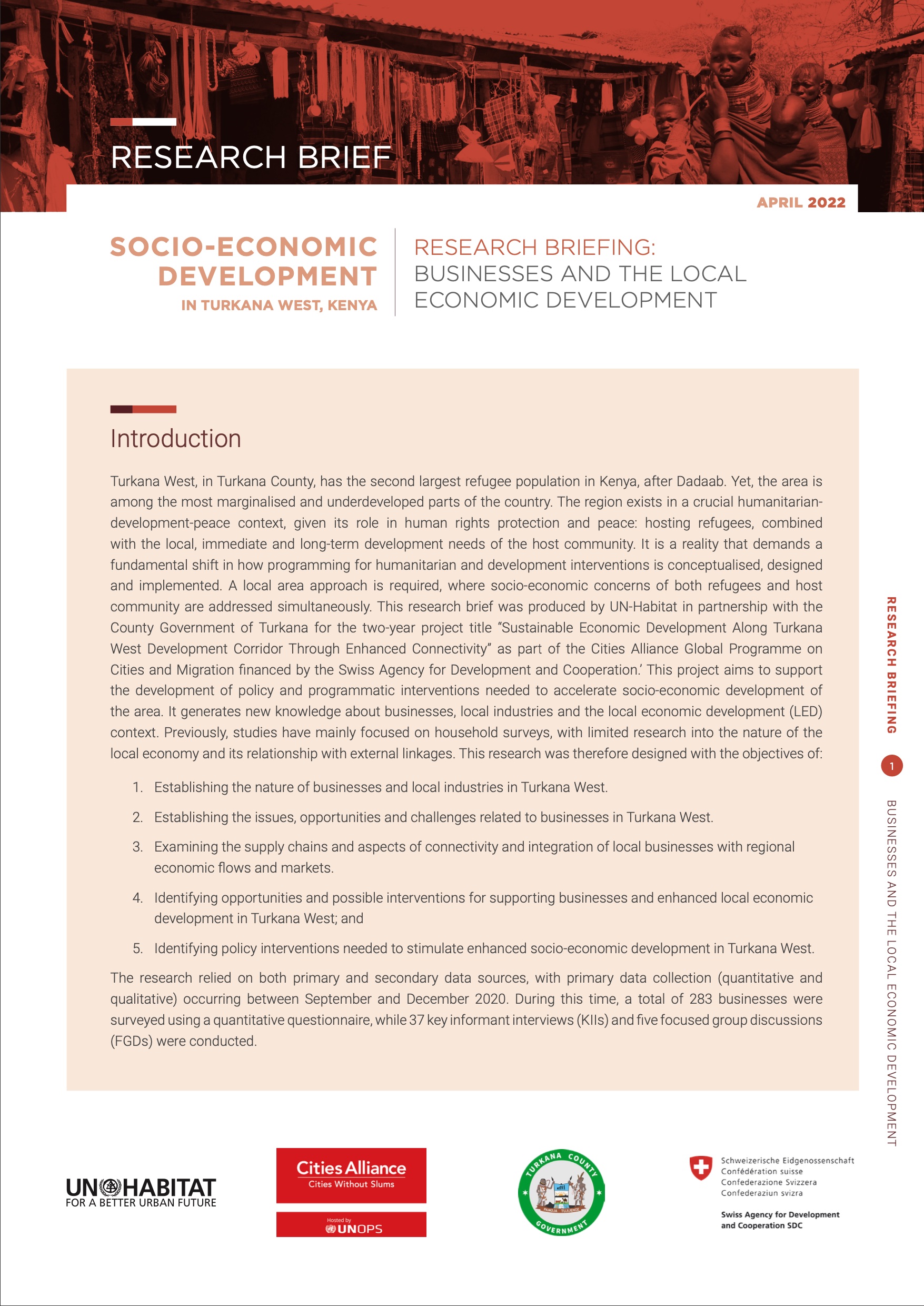- Who We Are
- How We Work
- Regional / Country Initiatives
- Legacy
- Core Themes
- Working Groups
- Portfolio & Results
- Newsroom
- Resources
Kenya: Turkana West Businesses and Local Economic Development


This publication is part of the series The Socio-Economic Development in Turkana West, Kenya. Volume II: A Report on Businesses and the Local Economic Development.
Turkana West, in Turkana County, has the second largest refugee population in Kenya, after Dadaab. Yet, the area is among the most marginalised and underdeveloped parts of the country. The region exists in a crucial humanitarian-development-peace context, given its role in human rights protection and peace: hosting refugees, combined with the local, immediate and long-term development needs of the host community.
As part of the Cities Alliance project Sustainable Economic Development Along Turkana West Development Corridor Through Enhanced Connectivity, UN-Habitat in partnership with the County Government of Turkana conducted this research, which main objectives included:
- Establishing the nature of businesses and local industries in Turkana West;
- Establishing the issues, opportunities and challenges related to businesses in Turkana West;
- Examining the supply chains and aspects of connectivity and integration of local businesses with regional economic flows and markets;
- Identifying opportunities and possible interventions for supporting businesses and enhanced local economic development in Turkana West; and
- Identifying policy interventions needed to stimulate enhanced socio-economic development in Turkana West.

As a result, this report and its research brief show that significant investments are required to develop local infrastructure, particularly water and sanitation, transportation, and communication.
Soft infrastructure is required to accompany these developments, including training and skills development for businesses, increased financial support, addressing land administration challenges and ameliorating other administrative constraints that businesses and local industries face.


